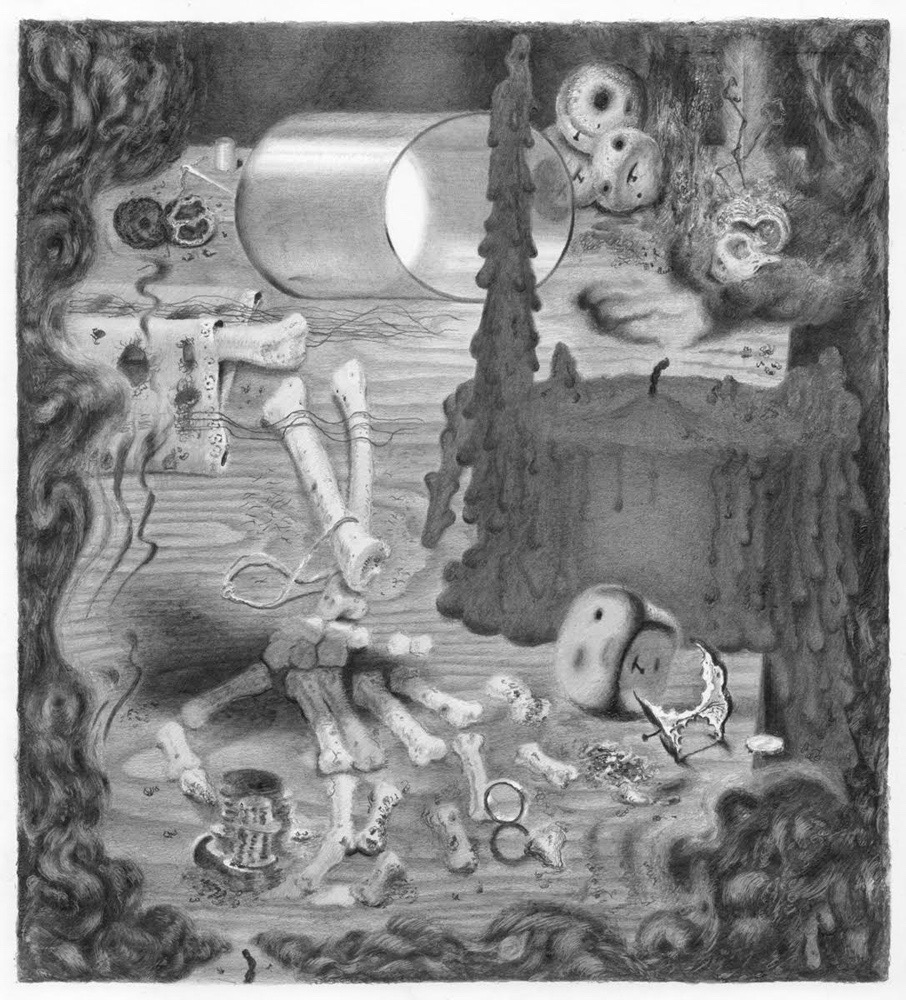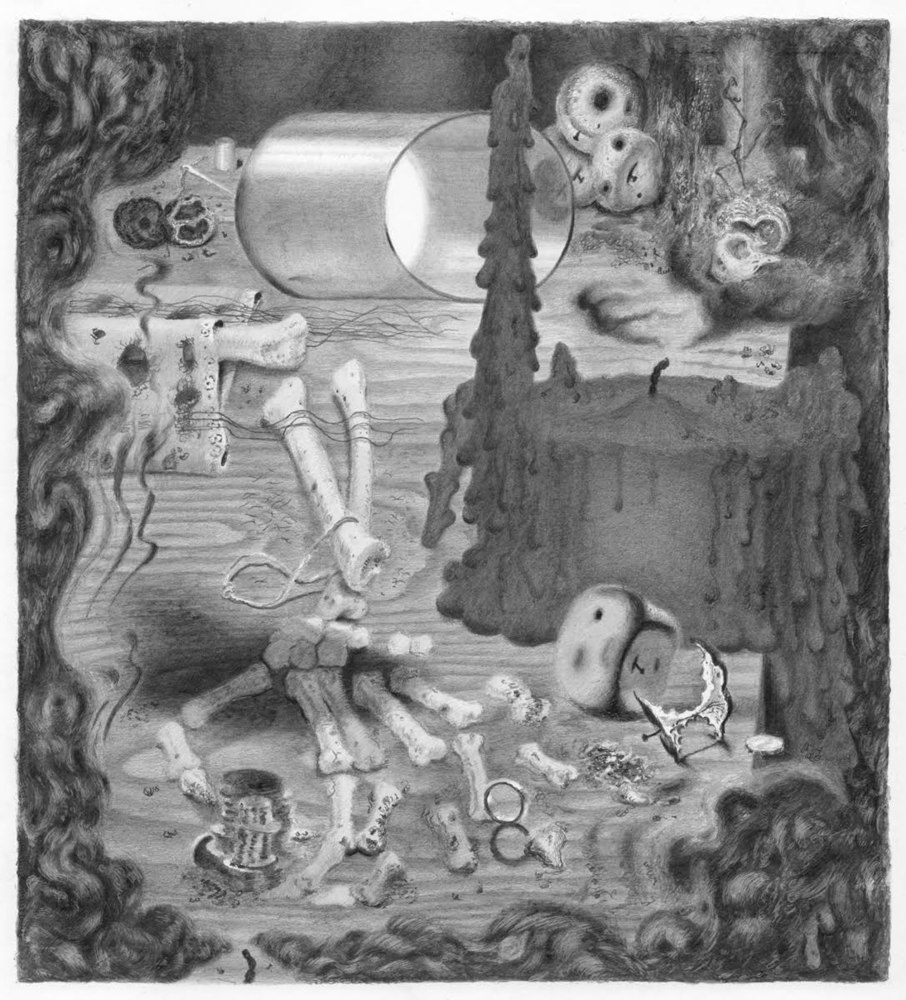
Joshua Marsh, “Thus Gone” (2015), graphite on paper, 9.5 x 8.625 inches (all images courtesy the artist and Jeff Bailey Gallery)
HUDSON, N.Y. — One of the worst things an artist can have is too much skill. Burdened in such a way, their technical facility for art making outpaces the energy of their desire. In the artist’s formative years, this tension between formal attainment and the conviction of their artistic will is often unbalanced and needs to be resolved if the artist is to achieve creative independence. The gap can be closed, in the end, by the artistic will itself — either by pushing one’s capacity for style and artifice to the limit (John Singer Sargent, Gerhard Richter, Alex Katz) or by putting one’s deepest instincts first and working them out through the materials (Alberto Giacometti, Mark Rothko, Eva Hesse). Put in crude contrast, some artists work from the hand and others from the gut. The end result, for the best artists, is neither here nor there.
Joshua Marsh is neither here nor there because he works from his dreams. That is to say, that when Marsh’s pencil contacts the paper, his natural talent — informed by an expansive range of mark-making vocabularies that mine everything from the illusive complexities of Edwin Dickinson to the goofy grotesquerie of Mad magazine —becomes a means to reveal what neither he nor anyone else could have conceived beforehand. His imagery is hard earned, with deliberately applied skill capturing the subjects of his wandering mind. This is why his present exhibition, Joshua Marsh: Drawings, at Jeff Bailey Gallery in Hudson, NY, consists of the best drawings I have seen in recent memory.

Joshua Marsh, “Busker’s Hat” (2015), graphite on paper, 6.625 x 7.625 inches
“Busker’s Hat” (2015), at less than 7 x 8 inches, is a downward view of a guitar-playing street entertainer, whose feet are behind, though strangely above, his upturned hat, on which coins rest or seemingly float around. The gap between the light and shadow below the hat suggests the hat is above, not on, the ground, which is puddled in places and perhaps being peed on, with dust swirling in the background around the base of the musician’s chair. His right foot lifted from the heel indicates tapping, yet the floor plane on which his foot rests is fused with the hat’s brim. In other words, the musician’s “stage” is fluid and multiplaned, and therefore unintelligible. To boot, the musician’s strumming hand, reflected below, is marked by a stigmata, drawn in a circular fashion that is repeated in space across the picture plane.
“Gleam” (2015), roughly 6 x 6 inches, is, by my best guest, a square pond framed with brush and leaves, and penetrated by two black mounds, perhaps porous rocks — although, according to linear perspective, they emerge in contradicting trajectories. This is the least puzzling part. In the water’s reflection, or beneath its surface, are dispersed character symbols: #, !, %, ?, &. Here is a visually unified image, or set of images, that merges nature, albeit strangely depicted, with features of linguistic discourse — an infusion of human-formed abstractions within a transient scene.
It’s a feature of our dreams that objects, people, and places can hold dual identities or morph through time. The unique qualities of Marsh’s drawings, or their significance as achievements by an artist who’s earned his independence, are their shape-shifting subjects, their wide range of technical approaches to drawing, and the indistinguishability of the artist’s talents from his instincts to bring out whatever is within.
Joshua Marsh: Drawings continues at Jeff Bailey Gallery (127 Warren Street, Hudson, New York) through August 30.



